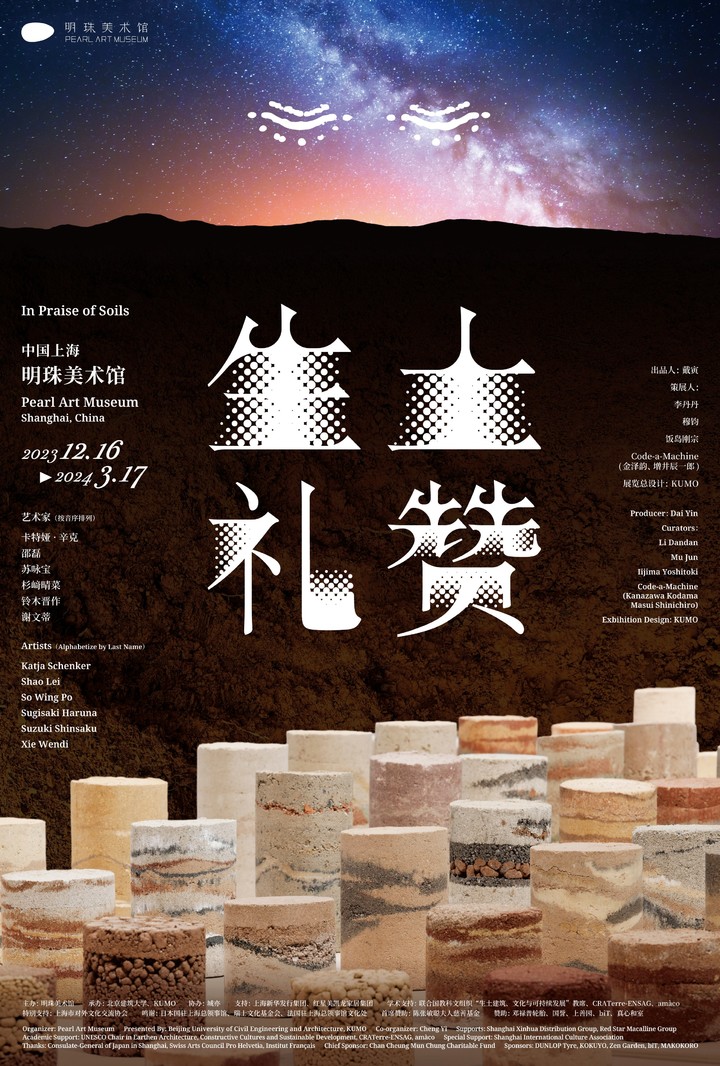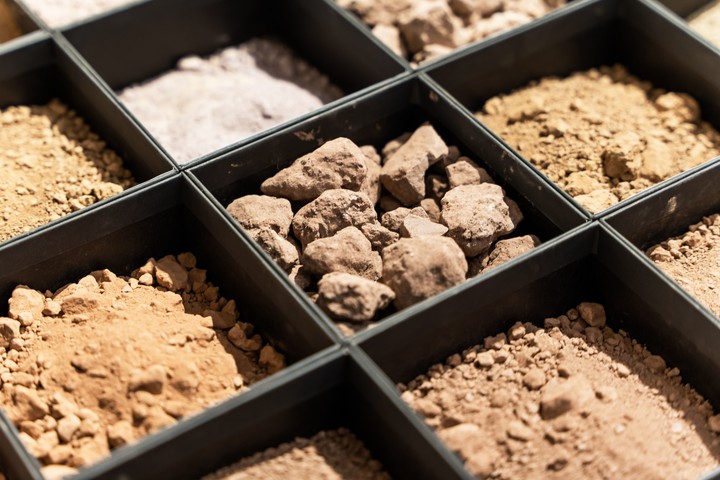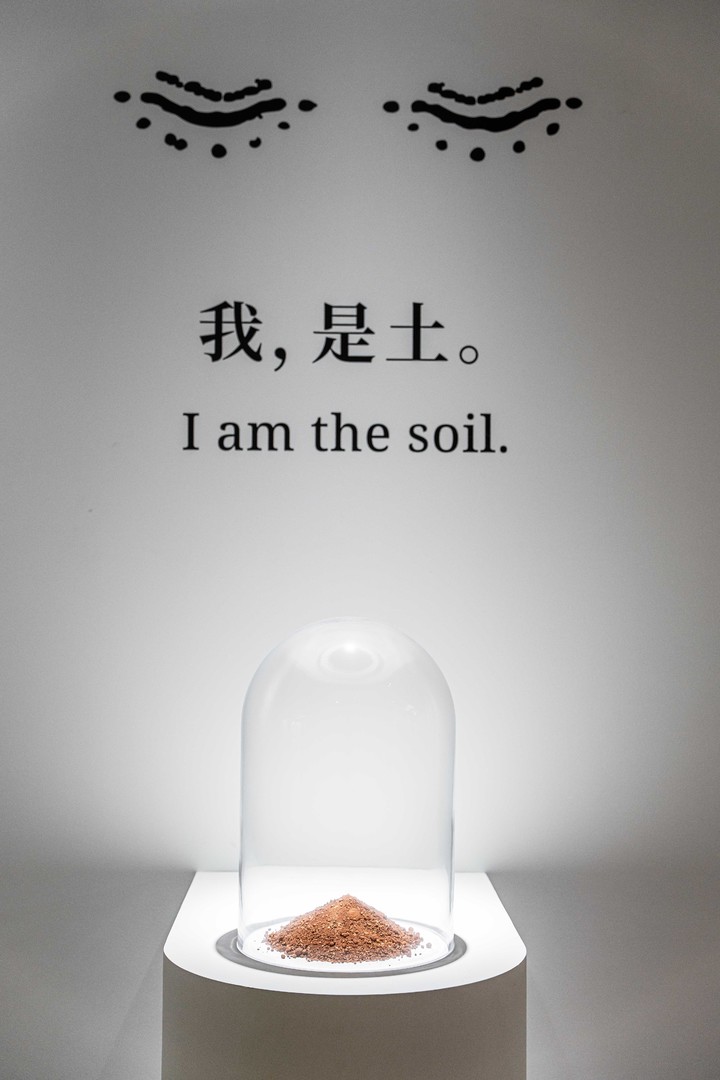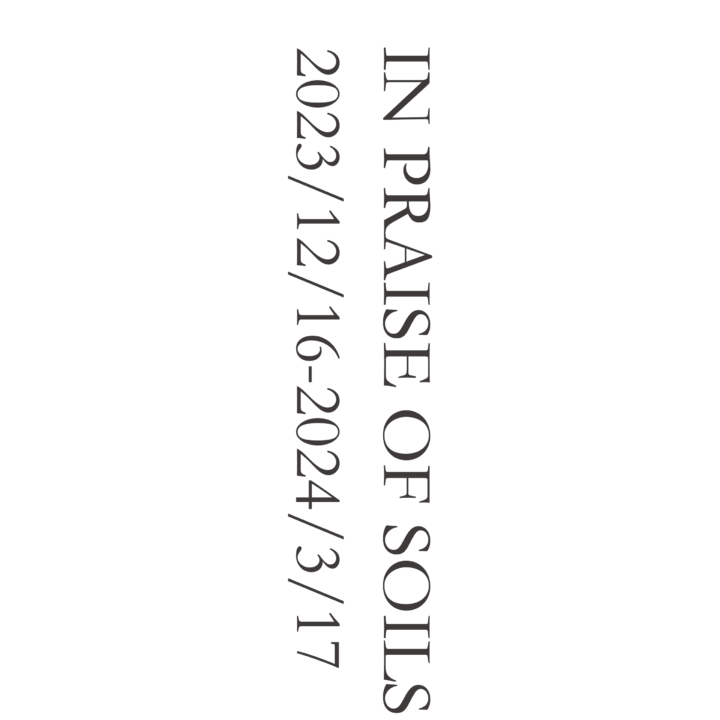The Pearl Art Museum’s “In Praise of Soils” Exhibition Unveiled
Soil Is by No Means Cloddish—Reacquaintance with Soil
A Revolution of Soil

Shanghai Pearl Art Museum grandly unveiled its new exhibition, “In Praise of Soils”, on December 16, 2023, which will be on until March 17, 2024. This is the first major soil-themed exhibition in Shanghai, transcending the boundaries of architecture, science, and art, presenting a groundbreaking and comprehensive perspective on new achievements in the exploration of “earth”, a traditional ecological material, focusing on cutting-edge practices and green co-creation with “growth potential”. The exhibition features rich “soil” elements, consisting of 5 chapters, 6 Chinese and overseas artists and craftsmen, and 32 sets of over 100 exhibits, involving various media such as installations, models, specimens, images, and paintings, and offering not only technology and popular science, experiments and achievements, but also amazing artistic works and interesting interactive experiences. The moving line of the exhibition is connected based on three key words, “seeing”, “knowing”, and “touching”. The study of soil, construction with soil, and art created with soil jointly create a world of soil that is irreplaceable for natural life, offering an experience of the natural symbiosis with soil from a new perspective.
What Is Earth?
Each new era of human existence is brought about by a new material (Mark Miodownik’s Stuff Matters), although these materials are hidden in daily life with ordinary and vague appearances, such as the “soil” beneath our feet.

Part of the soil samples collected by Onearth Studio
Soil materials taken from undisturbed soil that do not require calcination or chemical modification and can be used for building houses solely through simple mechanical processing are called “earth”. Since humans learned to build houses and cities 10,000 years ago, earth has undoubtedly been one of the most widely used building materials in the world. And to date, more than one-third of humans still reside in homes built with earth. The application of earth in China can be traced at least back to the Neolithic Age 8,000 years ago. The tradition of using soil as a material for construction is widespread in various provinces, and there are still at least 60 million people living in earth constructions made of earth to this day.
At the site of “In Praise of Soils” exhibition
Earth, which is natural and simple, can breathe and be sourced locally and recycled. Traditional earth constructions, due to their diverse construction methods, reflects regional characteristics and cultural attributes, showing the passage of time and retaining memory. Nowadays, the ecological value of raw soil is recognized and attracts great attention worldwide. People’s research and exploration of earth go from re-understanding soil to fully utilizing soil. They continuously explore sustainable development models for modern application of earth, seeking a positive and balanced relationship among technology, culture, and nature.
Seeing soil, knowing soil, touching soil
Over 100 exhibits in 5 chapters
A group photo of the curators and participating artists of the “In Praise of Soils” exhibition
Taking advantage of the diverse identities and cultural and professional backgrounds of the five curators, this visually appealing and fun exhibition that stimulates the audience’s senses is jointly planned and actualized over a year. Dr. Li Dandan, co-curator and director of Shanghai Pearl Art Museum, said, “This is a very unique exhibition that integrates architecture, art, environmental protection, materials, and craftsmanship, etc. We must find a matching working method. I hope to break away from traditional curation methods and explore a mechanism of ‘interdisciplinary co-creation’, building an organism composed of professionals from different fields and catalyzing a chemical reaction.”
The “In Praise of Soils” exhibition presents the integration of scientific research, modern application, and artistic creation of earth materials, innovating a brand new exhibition mode. The broad interdisciplinary and cross-field perspective and innovative working methods of the Museum is upheld. The exhibition is also a continuation of exhibitions such as “Return to Nature”, “In the Name of Flower”, “Long Life Design: Thinking and Practice”, and “From Clay to Words: Ceramics as Media”, which focus on and explore green topics like the connection among sustainability, nature, architecture, and art.

Exhibition site of “In Praise of Soils”
The exhibition, “In Praise of Soils”, takes the understanding of soil as the context, going deeper and deeper from “seeing soil”, “knowing soil” to “touching soil”. It is divided into five chapters: “The Birth of the Soil”, “The Nature of the Soil”, “Dwelling in the Earth”, “Earth and Art”, and “Let’s Touch the Soil More!”. The artistic works of six Chinese and overseas artists (Alphabetize by Last Name), including Katja Schenker, Shao Lei, So Wing Po, Sugisaki Haruna, Suzuki Shinsaku, and Xie Wendi, which have soil as the medium or which are related to soil, are not only included in the fourth chapter, “Soil and Art”, but also scattered and blended in other chapters.
The first chapter, “The Birth of the Soil”, allows the audience to see soil samples from different regions of China, as well as photos of undisturbed soil profiles taken during soil sample collection. It turns out that the soils around us are so different from each other! 100 soil samples of different colors are placed in a grid matrix, and more than 260 original and powdered soil samples collected from all over China are sorted and displayed in earth bottles. There are also colorful earth columns formed by manual ramming, showcasing the creative origin of modern earth architecture.
The “Eternal Whispers in the Weaver’s Dance” series, which includes seven paintings draw on site of the Museum, by the Japanese artist Sugisaki Haruna is also hanging here. She uses soil as the pigment to depict the spirit of natural creatures such as deer, wild boars, the sun, rocks, and the earth, evoking the primitive state of coexistence between humans and nature, which is extremely vibrant.
Site of the second chapter, “The Nature of the Soil”, of the “In Praise of Soils” exhibition
The second chapter, “The Nature of the Soil”, showcases the different properties of soils through various experimental results. For example, the Carazas experiment takes sandy loess and cohesive laterite as examples to demonstrate the different process application forms of earth materials with different moisture contents and under various external forces. In the glass bead experiment, when water is added between glass beads, adhesion is formed, known as the “liquid bridge principle”, which explains the role of water in aggregation and construction using soil (which can be manually experimented and observed on site). There are also 6 interesting videos of scientific experiments on earth materials, filmed and produced by the building materials research center Amàco with the support of the French CRATerre-ENSAG. These videos vividly demonstrate the scientific principles of the application of earth materials by adding egg white to the soil, heating it, preparing it into a silky and semi-liquid state or pressing tree-like veins between glass panels, probing into the feasible development path of modern application of earth materials.
The third chapter, “Dwelling in the Soil”, leads the audience from traditional earthen houses to modern earth architecture, presenting a comparison between ancient and modern ramming techniques. The traditional section displays full set of board-based ramming tools used for Tulou construction in the Nanjing area of Fujian, the construction process comics of early rammed earth walls, and three different styles of earth walls. In modern applications, there are representative global excellent cases selected from the TERRA Award, presenting the current status and development trends of international earth architecture practices. A section is devoted to introducing the researches and practices of Chinese earth architecture in recent years. The physical samples exhibited on site include indoor wall decorations made with modern thin-wall ramming techniques, three-dimensional earthen mosaic with concave and convex shapes, and translucent rammed earth embedded in acrylic cylinders, which combine modern aesthetics and technical qualities, considerably expanding the room for creative application of earth ramming techniques in modern architecture.
KUMO and the handicraft artist Suzuki Shinsaku jointly created the installation work, Tunnel of “Soils” and “Memories”, with bamboo as the backbone and soil as the wall. The circular path seems to be the cycle of the world. Entering the central open space, one can be isolated from the outside world and sit quietly and contemplate surrounded by the warm soil color. The brown soil wall is hand-painted using traditional earth plastering techniques, leaving behind the textural traces and memories of time shared by artists and children involved in co-creation.
Another installation work, The “Force” Contained in “Soils”, is painted on a bamboo-woven “canvas” to create a curved earth wall. The “force” formed by the fusion of soil and water dances on the bamboo “canvas” in small cracks like a painting.
The third chapter also showcases the “Slow-moving Shadow” series of ceramic works created by the artist Shao Lei. He draws inspiration from the environment and architecture he sees around him, using his hands to shape clay. His works reveal a certain contradiction within the soil—softness and hardness, fragility and strength, digging into the philosophical relationship between nature and humans.
The fourth chapter, “Earth and Art”, focuses on presenting the new forms of soil in the field of art, opening up infinite room for imagination. The artist Xie Wendi is skilled in using glass materials. On display in this exhibition is the “Mirror Image (Horn)” series of works. The main body is embedded on an iron countertop, with the upper part being ceramic, resembling thorny plants and forked animal horns. The lower part is blown glass, resembling a reflection of the upper part or a rhizome spreading underground. Although it appears soft, it is actually hard, being magnified layer by layer on the mirror surface, demonstrating the dialectical transformation between visibility and invisibility and between strength and fragility relying on the collision tension between the material and the shape.
The artist So Wing Po was born into a TCM family. Her work, Rhizome Suspension, takes Chinese medicinal materials that absorb nutrients from the earth and can be used for the human body as media. Various roots and stems of Chinese medicinal materials such as turmeric, ginger, and angelica are strung together in the air. Breathing in the breath and taste of the products in the soil while strolling, one can experience the connection between humans and nature, and feel the cycle of life.
Katja Schenker from Switzerland is an artist who often uses natural materials such as soil and minerals for artistic expression. The exhibited work, Dress, includes a women’s dress made of cement, as well as a documentary image of herself wearing it to engage in behavioral performance and making the hard dress soft. She examines our bodies and the surrounding environment through conversations with minerals and nature.
After seeing the original and various variable forms of soils, developing an understanding of their characteristics, and witnessing their diverse uses, what else can we do with soils? Chapter 5, “Let’s Touch the Soil More!”, allows the audience to interact intimately with soil by themselves. KUMO’s installation work, The Sound of “Soils”, seals soil into a glass tube, with 50 glass tubes of different soil quantities arranged in a circle with a diameter of 3 meters. The audience can use a matching drumstick to strike various tones and listen to the sound of soils.
Another interactive installation, The City of “Soils”, is co-created by KUMO and Hatanaka Kumiko. On a giant circular table with a diameter of over 6 meters, a clay model of Shanghai’s iconic buildings stands on one side. The winding mirror symbolizes the Huangpu River, and other parts represents the land where we live, reminding urbanites that the earth is right under their feet. A large amount of blank “land” on the tabletop is waiting for the visitors to use the rich and colorful “soil” collected from various parts of China to dye cylinders and wooden strips so that all participants can build an urban architectural landscape in their mind together, becoming one of the co-creators of this work.
The force growing from soil
Enriching public and aesthetic education activities
“At present all things are produced from the Earth and return to the Earth.” (Zhuangzi: Letting Be, and Exercising Forbearance) The soil gives birth to all things and nurtures life. Soil is a medium between organic and inorganic substances, and a medium between the universe and humanity. The “In Praise of Soils” exhibition is rooted in soil and connects all parties. We hope to concentrate widespread attention and high-level participation on topics such as earth architecture, ecological materials, green environmental protection, and sustainable development through exhibition and continuous multi-themed activities.
On December 14, 2023, on the eve of the opening of the “In Praise of Soils” exhibition, the Pearl Art Museum, in collaboration with the Lycée Français de Shanghai (Shanghai French School), held a unique creative practice class in the Center of Light Space. 65 French high school students living and studying in Shanghai, under the guidance of the Japanese artist Sugisaki Haruna jointly created a huge Chinese dragon painting with soils as the pigment. The Museum keeps supporting social art education and takes the initiative to promote museum-school collaboration, expanding artistic horizons and perception of beauty with creative thinking. We hope more schools and institutions work together with us. Welcome to contact the Public Education Department of the Museum.
On December 15, 2023, the opening preview day of the exhibition, an earth themed forum participated by five international earth architecture experts was held in the Center of Light Space, including Professor Mu Jun, Director of the Earth Architecture Research Center and Dean of the School of Architecture and Urban Planning at Beijing University of Civil Engineering and Architecture, Sergio Sabbadini, professor and director of TMD and earth design competition at Polytechnic University of Milan, Paul Emmanuel Loiret, partner at Joly&Loiret Architects and fellow at CRATerre-ENSAG, Takahashi Masami, first-class certified architect and head of residential building transactions in Japan, Hatanaka Kumiko, associate professor of life design at Gifu City Women’s College, first-class architect, and Ph.D., showed the audience the world’s most cutting-edge thinking and practice in terms of earth architecture.
During the exhibition, more public and aesthetic education activities, like interactive workshops, lectures, forums and guided tours, remain to be introduced. Please pay attention to information on the official account of Pearl Art Museum (PAM).




















